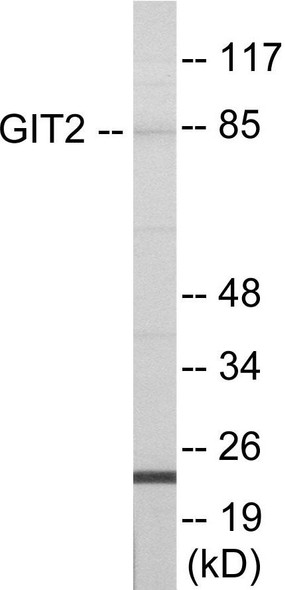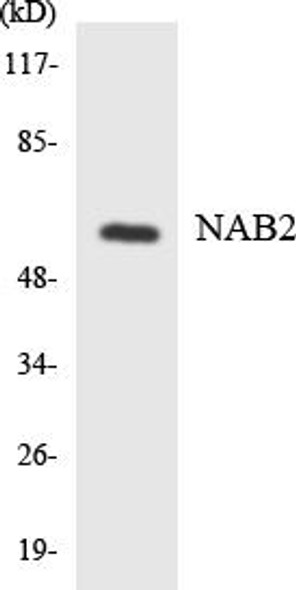Immunology
CBX5 Colorimetric Cell-Based ELISA
- SKU:
- CBCAB00381
- Product Type:
- ELISA Kit
- ELISA Type:
- Cell Based
- Research Area:
- Immunology
- Reactivity:
- Human
- Reactivity:
- Mouse
- Detection Method:
- Colorimetric
Description
| Product Name: | CBX5 Colorimetric Cell-Based ELISA |
| Product Code: | CBCAB00381 |
| ELISA Type: | Cell-Based |
| Target: | CBX5 |
| Reactivity: | Human, Mouse |
| Dynamic Range: | > 5000 Cells |
| Detection Method: | Colorimetric 450 nmStorage/Stability:4°C/6 Months |
| Format: | 96-Well Microplate |
The CBX5 Colorimetric Cell-Based ELISA Kit is a convenient, lysate-free, high throughput and sensitive assay kit that can detect CBX5 protein expression profile in cells. The kit can be used for measuring the relative amounts of CBX5 in cultured cells as well as screening for the effects that various treatments, inhibitors (ie siRNA or chemicals), or activators have on CBX5.
Qualitative determination of CBX5 concentration is achieved by an indirect ELISA format. In essence, CBX5 is captured by CBX5-specific primary antibodies while the HRP-conjugated secondary antibodies bind the Fc region of the primary antibody. Through this binding, the HRP enzyme conjugated to the secondary antibody can catalyze a colorimetric reaction upon substrate addition. Due to the qualitative nature of the Cell-Based ELISA, multiple normalization methods are needed:
| 1. | A monoclonal antibody specific for human GAPDH is included to serve as an internal positive control in normalizing the target absorbance values. |
| 2. | Following the colorimetric measurement of HRP activity via substrate addition, the Crystal Violet whole-cell staining method may be used to determine cell density. After staining, the results can be analysed by normalizing the absorbance values to cell amounts, by which the plating difference can be adjusted. |
| Database Information: | Gene ID: 23468, UniProt ID: P45973, OMIM: 604478, Unigene: Hs.349283 |
| Gene Symbol: | CBX5 |
| Sub Type: | None |
| UniProt Protein Function: | HP1 alpha: Component of heterochromatin that recognizes and binds histone H3 tails methylated at 'Lys-9' (H3K9me), leading to epigenetic repression. In contrast, it is excluded from chromatin when 'Tyr-41' of histone H3 is phosphorylated (H3Y41ph). Can interact with lamin-B receptor (LBR). This interaction can contribute to the association of the heterochromatin with the inner nuclear membrane. Involved in the formation of functional kinetochore through interaction with MIS12 complex proteins. Interacts with SUV420H1 and SUV420H2. Interacts with HP1BP3. Interacts directly with ATRX, CHAF1A, LBR, NIPBL, SP100, STAM2 and TRIM28 via the chromoshadow domain. Can interact directly with CBX3 via the chromoshadow domain. Interacts with histone H3 methylated at 'Lys- 9'. Interacts with BAHD1, MIS12 and DSN1. Interacts with POGZ; POGZ and PXVXL motif-containing proteins such as INCENP and TRIM28 compete for interaction with CBX5. Interacts with INCENP and TRIM24. Interacts with JC virus agnoprotein; this interaction induces the dissociation of CBX5 from LBR, resulting in destabilization of the nuclear envelope. Interacts with CHAMP1. Interacts with ASXL1. |
| UniProt Protein Details: | Protein type:Transcription, coactivator/corepressor Chromosomal Location of Human Ortholog: 12q13.13 Cellular Component: kinetochore; nucleoplasm; PML body; histone methyltransferase complex; transcriptional repressor complex; histone deacetylase complex; nucleolus; nuclear envelope; nuclear heterochromatin; nucleus; chromocenter Molecular Function:protein binding, bridging; protein binding; protein homodimerization activity; histone deacetylase binding; chromatin binding; methylated histone residue binding Biological Process: viral reproduction; blood coagulation; negative regulation of transcription, DNA-dependent |
| NCBI Summary: | This gene encodes a highly conserved nonhistone protein, which is a member of the heterochromatin protein family. The protein is enriched in the heterochromatin and associated with centromeres. The protein has a single N-terminal chromodomain which can bind to histone proteins via methylated lysine residues, and a C-terminal chromo shadow-domain (CSD) which is responsible for the homodimerization and interaction with a number of chromatin-associated nonhistone proteins. The encoded product is involved in the formation of functional kinetochore through interaction with essential kinetochore proteins. The gene has a pseudogene located on chromosome 3. Multiple alternatively spliced variants, encoding the same protein, have been identified. [provided by RefSeq, Jul 2008] |
| UniProt Code: | P45973 |
| NCBI GenInfo Identifier: | 1170338 |
| NCBI Gene ID: | 23468 |
| NCBI Accession: | P45973.1 |
| UniProt Secondary Accession: | P45973,B2R8T9, |
| UniProt Related Accession: | P45973 |
| Molecular Weight: | 191 |
| NCBI Full Name: | Chromobox protein homolog 5 |
| NCBI Synonym Full Names: | chromobox homolog 5 |
| NCBI Official Symbol: | CBX5 |
| NCBI Official Synonym Symbols: | HP1; HP1A; HEL25 |
| NCBI Protein Information: | chromobox protein homolog 5; HP1-ALPHA; HP1Hs alpha; antigen p25; HP1 alpha homolog; epididymis luminal protein 25; heterochromatin protein 1-alpha; heterochromatin protein 1 homolog alpha; chromobox homolog 5 (HP1 alpha homolog, Drosophila) |
| UniProt Protein Name: | Chromobox protein homolog 5 |
| UniProt Synonym Protein Names: | Antigen p25; Heterochromatin protein 1 homolog alpha; HP1 alpha |
| Protein Family: | Chromobox protein |
| UniProt Gene Name: | CBX5 |
| UniProt Entry Name: | CBX5_HUMAN |
| Component | Quantity |
| 96-Well Cell Culture Clear-Bottom Microplate | 2 plates |
| 10X TBS | 24 mL |
| Quenching Buffer | 24 mL |
| Blocking Buffer | 50 mL |
| 15X Wash Buffer | 50 mL |
| Primary Antibody Diluent | 12 mL |
| 100x Anti-Phospho Target Antibody | 60 µL |
| 100x Anti-Target Antibody | 60 µL |
| Anti-GAPDH Antibody | 60 µL |
| HRP-Conjugated Anti-Rabbit IgG Antibody | 12 mL |
| HRP-Conjugated Anti-Mouse IgG Antibody | 12 mL |
| SDS Solution | 12 mL |
| Stop Solution | 24 mL |
| Ready-to-Use Substrate | 12 mL |
| Crystal Violet Solution | 12 mL |
| Adhesive Plate Seals | 2 seals |
The following materials and/or equipment are NOT provided in this kit but are necessary to successfully conduct the experiment:
- Microplate reader able to measure absorbance at 450 nm and/or 595 nm for Crystal Violet Cell Staining (Optional)
- Micropipettes with capability of measuring volumes ranging from 1 µL to 1 ml
- 37% formaldehyde (Sigma Cat# F-8775) or formaldehyde from other sources
- Squirt bottle, manifold dispenser, multichannel pipette reservoir or automated microplate washer
- Graph paper or computer software capable of generating or displaying logarithmic functions
- Absorbent papers or vacuum aspirator
- Test tubes or microfuge tubes capable of storing ≥1 ml
- Poly-L-Lysine (Sigma Cat# P4832 for suspension cells)
- Orbital shaker (optional)
- Deionized or sterile water
*Note: Protocols are specific to each batch/lot. For the correct instructions please follow the protocol included in your kit.
| Step | Procedure |
| 1. | Seed 200 µL of 20,000 adherent cells in culture medium in each well of a 96-well plate. The plates included in the kit are sterile and treated for cell culture. For suspension cells and loosely attached cells, coat the plates with 100 µL of 10 µg/ml Poly-L-Lysine (not included) to each well of a 96-well plate for 30 minutes at 37°C prior to adding cells. |
| 2. | Incubate the cells for overnight at 37°C, 5% CO2. |
| 3. | Treat the cells as desired. |
| 4. | Remove the cell culture medium and rinse with 200 µL of 1x TBS, twice. |
| 5. | Fix the cells by incubating with 100 µL of Fixing Solution for 20 minutes at room temperature. The 4% formaldehyde is used for adherent cells and 8% formaldehyde is used for suspension cells and loosely attached cells. |
| 6. | Remove the Fixing Solution and wash the plate 3 times with 200 µL 1x Wash Buffer for five minutes each time with gentle shaking on the orbital shaker. The plate can be stored at 4°C for a week. |
| 7. | Add 100 µL of Quenching Buffer and incubate for 20 minutes at room temperature. |
| 8. | Wash the plate 3 times with 1x Wash Buffer for 5 minutes each time. |
| 9. | Add 200 µL of Blocking Buffer and incubate for 1 hour at room temperature. |
| 10. | Wash 3 times with 200 µL of 1x Wash Buffer for 5 minutes each time. |
| 11. | Add 50 µL of 1x primary antibodies (Anti-CBX5 Antibody and/or Anti-GAPDH Antibody) to the corresponding wells, cover with Parafilm and incubate for 16 hours (overnight) at 4°C. If the target expression is known to be high, incubate for 2 hours at room temperature. |
| 12. | Wash 3 times with 200 µL of 1x Wash Buffer for 5 minutes each time. |
| 13. | Add 50 µL of 1x secondary antibodies (HRP-Conjugated AntiRabbit IgG Antibody or HRP-Conjugated Anti-Mouse IgG Antibody) to corresponding wells and incubate for 1.5 hours at room temperature. |
| 14. | Wash 3 times with 200 µL of 1x Wash Buffer for 5 minutes each time. |
| 15. | Add 50 µL of Ready-to-Use Substrate to each well and incubate for 30 minutes at room temperature in the dark. |
| 16. | Add 50 µL of Stop Solution to each well and read OD at 450 nm immediately using the microplate reader. |
(Additional Crystal Violet staining may be performed if desired – details of this may be found in the kit technical manual.)






